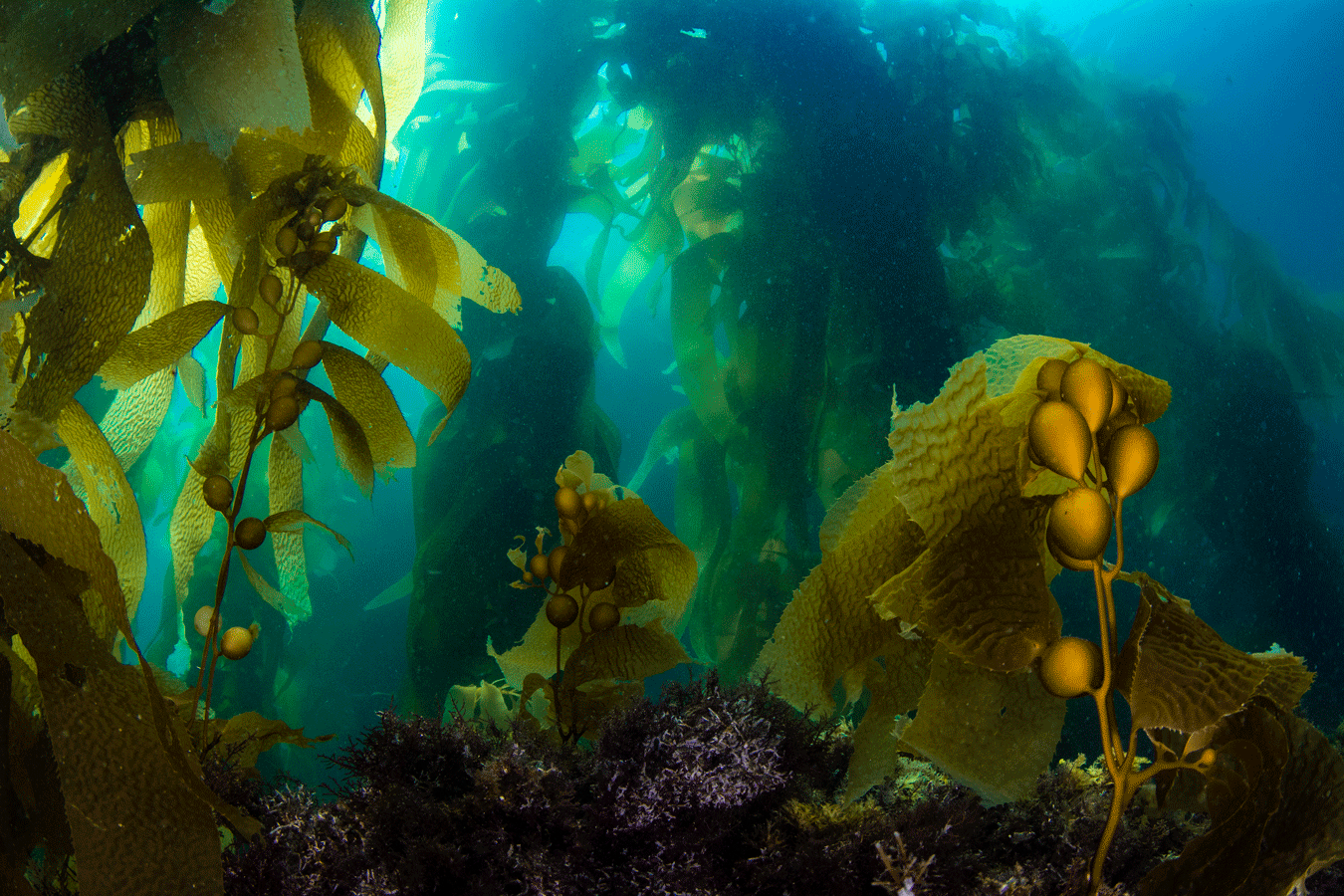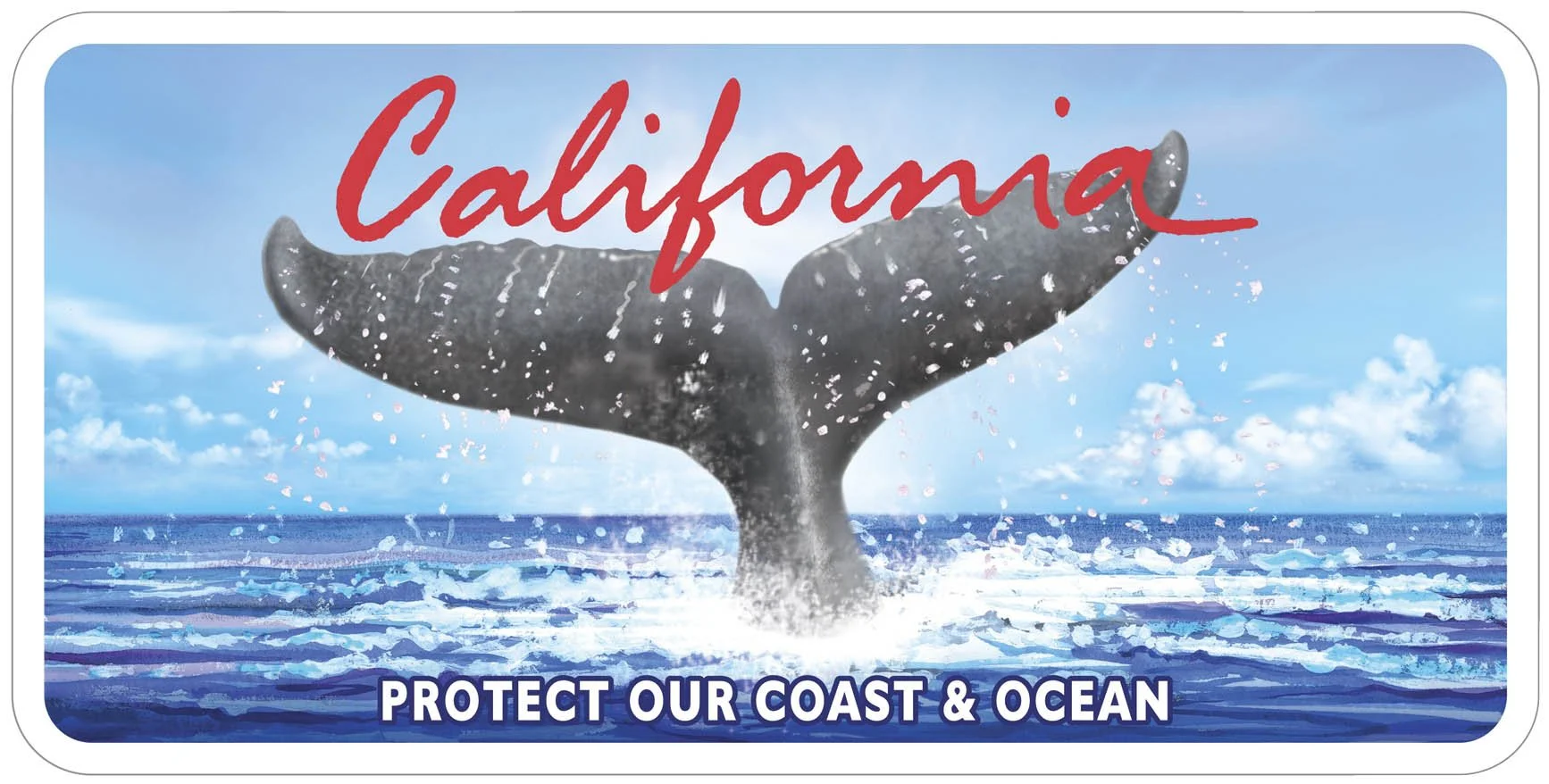
Help the Kelp
Declining kelp forests are a serious environmental concern, and there are several ways to help address this issue.
-

Help the Kelp!
California’s kelp forests are in crisis, with a 95% decline along a 350-mile stretch from San Francisco to the Oregon border. Restoration efforts are now underway, led by collaborations among NOGs, fishermen and scientists. While bull kelp can grow up to 10 inches a day, even this rapid growth cannot counter the accelerating impacts of climate change.
Help the “Sequoias of the Sea” project inspire more people to learn and care about these vital underwater forests.
-

Reduce Your Carbon Footprint
Kelp forests are experiencing alarming declines globally due to climate change and marine heatwaves. Reducing your use of fossil fuels can help all ecosystems and lead us to more resilient kelp forests.
Use The Nature Conservancy’s interactive calculator to learn your carbon footprint and actions to take to reduce it. -

Mysterious World of Bull Kelp
Above/Below is an ocean literacy campaign to raise awareness about kelp forests across the Northeastern Pacific. This webstory, The Mysterious World of Bull Kelp, is currently the centerpiece of our campaign—celebrating the power of art and science to tell the bull kelp story.
The bull kelp forest is a fascinating and complex place with lots of different organisms interacting with each other in different ways in different places. We hope you are curious about it!
-

Join the Kelp Challenge
The Kelp Forest Challenge is a global movement to raise our connection to the ocean and ultimate protect and restore 4 million hectares of kelp forests by 2040.
Anyone can get involved, it doesn't matter if you are a snorkeller, CEO, scientist, artist, Prime Minister, or ocean lover you can join the movement.
-

Snapshot Cal Coast
Help us document California's incredible biodiversity on your own or at a bioblitz event near you.
Every summer,the California Academy of Sciences—with support from the California Ocean Protection Council, the California Department of Fish and Wildlife, the MPA (Marine Protected Area) Collaborative Network, and many other partners—mobilizes communities from Del Norte to San Diego to make and share observations of plants, animals, and seaweeds along the California coast using the iNaturalist app.
-

Solstice Sea Star Search
Sea star wasting syndrome decimated sea star populations along the entire West Coast between 2013 and 2014, hitting sunflower sea stars (Pycnopodia helianthoides) particularly hard. Many species are still struggling to bounce back—and the sunflower star may even be considered locally extinct in some areas. We lack data on many sea star species and need your help to gather more information on where these species are found.
Because tides are at their lowest point in December and June due to the winter and summer solstices, it's the best time of year for California beachgoers to search for sea stars—and make a difference for the recovery of these important species.
-

WHALE TAIL License Plate
Support ocean conservation by getting an official license plate issued by the Department of Motor Vehicles for vehicles registered in California. Sponsored by the California Coastal Commission, proceeds from the sale of the plates support a wide array of coastal education, conservation, and environmental enhancement projects throughout the state, with funds administered by the Coastal Commission, the State Coastal Conservancy, and the California Natural Resources Agency.n goes here
Are you a diver?
-

Dive In
The Reef Check Kelp Forest Monitoring Training course is designed to provide participants with the skills and experience to complete the Reef Check Kelp Forest Monitoring survey protocol accurately. In addition to direct survey methods, the training will address safe diving practices, techniques of research diving, sampling design and theory, general marine ecology including species identification and interactions, and the importance of monitoring to meet marine management needs.
-

Help the Kelp
Join the Caspar Cove Project (part of the Watermen's Alliance Urchin Removal Efforts) and help save kelp forests and ensure a thriving and sustainable future for our beloved blue planet.
This initiative is dedicated to increasing community involvement and conducting research to help understand and restore the ecological balance at Caspar Cove, Northern California.
Save the Date
North Coast KelpFest
More Kelp Resources
The Nature Conservancy: California Kelp Program
Noyo Center for Marine Science, Fort Bragg
Waterman’s Alliance - Casper Cove Project
Greater Farallones Association - Kelp Restoration Program
Giant Giant Kelp Restoration Project Tankers Reef, Monterey CA
Sunflower Sea Star Lab, Moss Landing, CA
The Mysterious World of Bull Kelp - Exploring the Kelp Forests of the North Pacific Coast
Last Forests Project - Film about Northern California kelp forests
Kelpwatch.org - Monitoring kelp for conservation
Seatrees - Protecting kelp forest habitats
Kelp Forest Alliance - A global home for kelp forests
Sea Change Project - Community of scientists, storytellers, journalists and filmmakers who are dedicated to Great African Seaforest.

